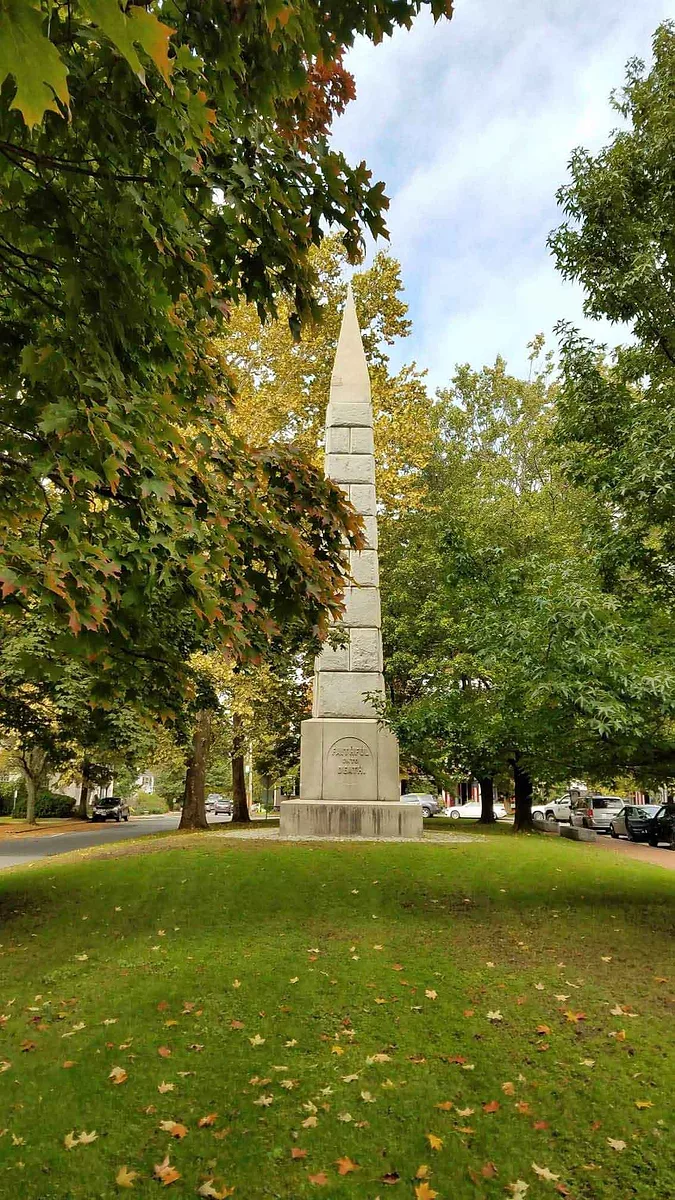Shock. Anger. Patriotism. Resolve. These were just some of the emotions that swept through the Northern states when Confederate forces fired on the Federal-held Fort Sumter in Charleston Harbor, South Carolina on April 12, 1861. The Civil War had begun.
Two days after Sumter’s surrender, President Lincoln issued a call for 75,000 volunteers to put down the rebellion. Massachusetts answered the call with an overwhelming response, and nearly 160,000 Bay Staters would serve in the Union army and navy. Like the rest of the North, the people of Concord were angered and inspired, and the town of just over 2,000 inhabitants would ultimately do its part by sending 450 men off to the war.

Colonel George L. Prescott
| Public DomainIt was also no coincidence that it was on April 19, 1861, when 82 volunteers from the Concord Artillery left for Washington D.C. in response to Lincoln’s call. These were the first men of Concord to go off to the war. One of the first to volunteer was the company commander, 32- year-old Captain George L. Prescott. Tall, strong, and charismatic, it was reported that Prescott was the beau-ideal of an officer, “a stalwart man, every inch of whose six feet is of soldier stamp.” He would soon become the Colonel of the 32nd Massachusetts Infantry and serve with distinction through some of the war’s bloodiest battles, including Fredericksburg, Gettysburg, and the Wilderness.
Sadly, Prescott would not survive the war. During the Siege of Petersburg, the 32nd was involved in a charge which drove the Rebels into their entrenchments; Prescott received a mortal wound, with the bullet passing into his left breast. He died the next day and was brought home and buried in Sleepy Hollow. Ralph Waldo Emerson would eulogize him as a man with “a patience not to be tired out, a serious devotion to the cause of the country that never swerved, a hope that never failed.” Recalling another hero, Emerson went on, saying that Prescott “was a Puritan in the army, with traits that remind one of John Brown — an integrity incorruptible, and an ability that always rose to the need.”

Grave of Lt. Ezra Ripley at Sleepy Hollow Cemetery
| ©Richard SmithRipley was severely wounded in the leg during the Siege of Vicksburg and died on a boat on the Mississippi River as he was returning to Concord and his family home, the Old Manse. He was 36 years old. But Ezra believed in the Union cause wholeheartedly and has no qualms about dying for it; in one of the final letters to his family he wrote, “To think that we were in danger of losing a great and good government…made me almost frantic. If anything were needed to make me feel the necessity of working...to the last, to give the last drop to my country, this journey has convinced me. God forgive me if I hesitate or falter now...”
Both Prescott and Ripley’s names are on the Civil War monument in Concord Center. But one of the town’s heroes who died for the Union cause is not on the obelisk; his name was George Washington Dugan.
 ©Richard Smith
©Richard SmithDugan’s name was missing from Concord’s monument because his body was never found. That didn’t sit right with many Concordians.In February of this year, Dugan’s sacrifice was formally recognized when the Concord Select Board unanimously approved the installation of a tablet in his honor at the base of the monument.
As Concord husbands, fathers, and sons enlisted to fight the Confederates, April 19, 1775, and the events at the Old North Bridge were never far from their minds. Their grandfathers fought to create our nation and the soldiers of 1861 were fighting to preserve it. Concord men with names like Barrett, Buttrick, and Hosmer answered their country’s call, just as their ancestors had done 86 years before.
Given Concord’s association with April 19, it should be no surprise that the 30’ high granite obelisk in the center of town was dedicated on April 19, 1867, the 92nd anniversary of the Battle of Concord. It was a day, Emerson would note, that is “in Concord doubly our calendar day, as being the anniversary of the invasion of the town by the British troops in 1775, and of the departure of the company of volunteers for Washington, in 1861.”
In a symbolic gesture to tie together the two generations of patriots, a corner of the monument rests on a stone from the abutment of the original North Bridge. The inscription on one side reads, “Town of Concord Builds this Monument in Honor of the Brave Men Whose Names it Bears and Records with Grateful Pride that They Found Here a Birthplace, Home or Grave. 1866” while the east side of the monument simply states, “They died for their country in the war of the rebellion” and it lists the names and regiments of the men from Concord who lost their lives in the war.
An estimated 700,000 men died in the Civil War, and 49 of them were from Concord; white and black, wealthy and poor, lawyer and farmer, these men of Concord made the ultimate sacrifice in the preservation of the Union and the destruction of slavery, and Concord has not forgotten them. As always, Ralph Waldo Emerson said it best, about these men, these Concord heroes:
“A duty so severe has been discharged, and with such immense results of good, lifting private sacrifice to the sublime, that, though the cannon volleys have a sound of funeral echoes, they can yet hear through them the benedictions of their country and mankind.”


